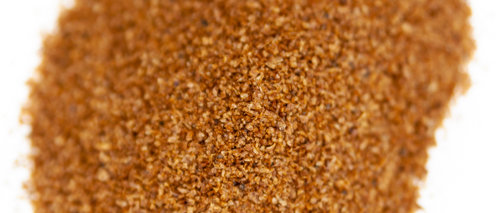Dried Molasses For Plants

Gardening is an art that combines patience, skill, and the right ingredients to create a thriving and beautiful garden. One of these essential ingredients that can work wonders in your garden is dried molasses. Dried molasses powder for plants, also known as dry molasses or molasses powder, is a versatile and conventional product perfect for indoor or outdoor gardening. This is not an organic soil conditioner or an organic fertilizer or blackstrap molasses. However, it offers a multitude of benefits for both plants and soil. In this comprehensive article, we will explore the uses, advantages, and application of dried molasses in your garden. To purchase this from us, please click the links in green below to be directed to our shop page.
What is Dried Molasses?
Dried molasses is a dry, granular product made from sugarcane or sugar beet molasses. It is created by removing the moisture content from liquid molasses, resulting in a concentrated and easy-to-use soil amendment. While it is a byproduct of sugar production, dried molasses is an invaluable resource for gardeners looking to enhance the health and vitality of their plants during the growing season. This dried molasses is also used in the animal feed industry as it stimulates appetite of cattle. It starts with a soy meal and then has liquid molasses sprayed onto the meal.
Benefits of Using Dried Molasses in Your Garden
-
Soil Health Improvement: Dried molasses is a rich source of organic matter, which helps improve soil structure and enhance its fertility. It aids in water retention, promotes aeration, and encourages beneficial microbial activity in the soil.
-
Microbial Stimulation: The organic matter in dried molasses serves as a food source for microbes in the soil, such as bacteria and fungi. These microbes break down organic materials and help release nutrients, making them more accessible to plants. Add some dried molasses to your compost tea!
-
Improved Nutrient Uptake: The organic matter in dried molasses enhances nutrient availability and natural plant fertility, helping them absorb essential elements more effectively. This can result in healthier, more robust growth.
Using Dried Molasses in Your Garden

-
Soil Preparation:
-
Before planting, incorporate dried molasses into the soil at a rate of 5-10 pounds per 1,000 square feet. That is .5-1 pounds per 100 sq. feet.
-
Mix it thoroughly to ensure an even distribution in the root zone of your plants.
-
You may also steep this product and dump the solution onto the plant for a root drench.
-
-
Top-Dressing:
-
Sprinkle dried molasses on the surface of your garden beds, flower beds, or vegetable gardens.
-
Use 2-4 pounds of dried molasses per 100 square feet to enrich the soil.
-
-
Pest Control:
-
To attract beneficial insects and deter pests like fire ants, you can mix dried molasses with a gallon of water to create a spray. You may also apply the dried molasses to the ant mound itself to help deter and kill fire ants.
-
Apply the spray to your plants as needed, making sure to avoid the blossoms.
-
-
Weed Control:
-
For weed prevention, apply dried molasses at a rate of 5-10 pounds per 1,000 square feet or 20 lbs (heavy application) for every 2,000 square feet in your garden.
-
Water the area to activate the molasses and discourage weed growth.
-
Dried Molasses Cautions & Considerations
While dried molasses is an excellent addition to your garden, it's important to keep some considerations in mind:
-
Moderation: Use dried molasses in moderation. Excessive use can lead to an overabundance of nutrients, potentially harming your plants.
-
Residue: Be aware that dried molasses can leave a residue on plant foliage when used as a foliar spray. This may affect the appearance of your plants but does not harm them.
-
Compatibility: Ensure that dried molasses is compatible with other fertilizers or soil amendments you plan to use in your garden. Consult with a local nursery or extension service for specific recommendations. This is a conventional product and can't be used with an organic program.
Dried molasses is a garden secret that can elevate your gardening experience by improving soil health, stimulating beneficial microbes, attracting helpful insects, and controlling both weeds and pests naturally. As a versatile soil conditioner, it provides numerous benefits without the potential harm associated with synthetic chemicals. By incorporating dried molasses into your gardening practices, you can create a thriving and vibrant garden that is not only visually appealing but also environmentally friendly.



